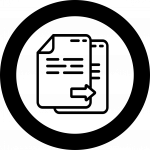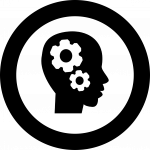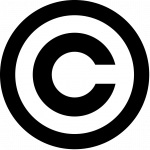43 Plagiarism and Academic Integrity
Plagiarism

The Merriam-Webster dictionary defines the word plagiarize as “to steal and pass off (the ideas or words of another) as one’s own: use (another’s production) without crediting the source.” When you use the words and ideas of others in your own work without citing where you got that information from, this is considered plagiarism. Whether a student purposely tries to pass off information as their own (i.e., copying and pasting text or paraphrasing another source without giving credit) or does so unintentionally (i.e., not knowing how to cite sources), plagiarism goes against the moral and ethical code for students called academic integrity. Academic integrity is the expectation that all students will be honest and responsible and will not plagiarize or cheat and that they will be motivated by more than just getting good grades. Most colleges have consequences for violating academic integrity, which may include suspension or expulsion from the institution.
“As a student, you will be both using other’s knowledge as well as your own insights to create new scholarship. To do this in a way that meets academic integrity standards, you must acknowledge the part of your work that develops from others’ efforts. You do this by citing the work of others. You plagiarize when you fail to acknowledge the work of others and do not follow appropriate citation guidelines” (“Ethical Use & Citing Sources”).
Intellectual Property

When you avoid plagiarism by citing your sources, you are respecting the time and energy other people put into creating their intellectual property. Just like physical property that you can call your own, intellectual property describes an expression of the human mind that can be owned and protected. Once somebody puts their creative ideas into a fixed and tangible format, like in the form of a book, movie, or song, that becomes intellectual property and can be protected. Intellectual property comes in many forms, but the most popular are copyright, patents, and trademarks. Copyright is the most common form of intellectual property that has relevance for college-level research.
Copyright

Copyright is a type of protection for intellectual property that is automatically applied to any creative work that is placed in a fixed, tangible format. That means the email that you wrote to your instructor this morning or the doodle you drew in your notes during English are all protected by copyright because they are both in a tangible format and are creative and original (in other words, nothing exactly like them has ever existed until you created them). Though works can be registered through the U.S. Copyright Office, that is not mandatory and even things you see without the copyright symbol (©) or a copyright notice can be (and should be assumed to be) protected by copyright. Copyright gives you exclusive rights to whatever you created, meaning others cannot legally copy, distribute, display, modify, or perform (e.g., a play or piece of music) without getting your permission to do so. Copyright in the United States lasts the life of the creator plus an additional 70 years.
Fair Use

Fair use is an exception to copyright in which you can use a copyright-protected work without getting permission from the creator. There is no hard and fast way to determine whether or not a use of a copyrighted work is a fair use, but there is a four-factor test that can help measure how “fair” the fair use is and whether or not the use is an infringement of copyright. These factors are:
- The purpose and character of your use
- The nature of the copyrighted work
- The amount and substantiality of the portion taken
- The effect of the use upon the potential market.
Fair use weighs heavily in favor of educational uses. So in most cases, using images and/or videos you’ve found online for your presentation for class is not going to land you in hot water. Why is this? Using an image or video that belongs to somebody else without permission for an educational use is not likely to impact the potential market, it is only being shared with the people in your class, and it is being used to educate yourself and others. It is still always good practice to cite where the content came from and try to use openly licensed content that allows people to use it without seeking permission first (see “Creative Commons” section below) whenever possible.
Creative Commons
![]()
The world’s first copyright law was enacted in the 1700s, way before the invention of the internet. The internet allows people to share information with the touch of a virtual button, yet our current copyright law restricts this type of sharing unless you get permission from the creator first. While copyright means that the picture of your cat that you took and uploaded online cannot be redistributed by anybody else without your permission, it also means that we can’t use copyrighted music in a slideshow of 50 cat pictures you want to put together and share with friends online.
In 2001, a non-profit organization called Creative Commons saw the need for an improvement upon copyright in the digital age. We needed something that enabled the sharing and remixing of knowledge and creativity, which we are able to do so easily online. They developed tools called Creative Commons licenses that allow creators to define what they want others to be able to do and not do with their work. Creative Commons licenses free everyone from needing to track down creators and ask for permission before using their works, and encourage creativity by permitting adaptations and remixes of Creative Commons licensed works.
This textbook incorporates content that is Creative Commons licensed and the entire textbook is licensed with a Creative Commons license, as well, to encourage others to use and adapt the content in a way that works best for them. If you are interested in using images, video, music, and other creative content that has an open license, try CC Search, or try looking for a Creative Commons filter when using Google, Flickr, and YouTube.
Sources
“Ethical Use and Citing Sources” by Teaching & Learning, Ohio State University Libraries is licensed under CC BY 4.0
Fair Use section adapted from “2.4 Exceptions and Limitations to Copyright” by Creative Commons, licensed under CC BY 4.0
Image: “Copyright Symbol” is in the Public Domain
Image: “Creative Commons Logo” is in the Public Domain
Image: “Fair Use Logo” by Óðinn at English Wikipedia is in the Public Domain
Image: “Files” by Smashicons, adapted by Kelsey Smith, from Flaticon.com
Image: “Gears In Bald Head Side View” by Freepik, adapted by Kelsey Smith, from Flaticon.com
“Plagiarize.” Merriam-Webster, 1 Nov. 2020.
To pass off another person's work as one's own. Using another person's words, either word-for-word or paraphrased or summarized, and not referencing them.
The expectation that all students will be honest in their academic work, will not plagiarize or cheat, and will be motivated by more than just getting good grades.
Describes an expression of the human mind that can be owned and protected once it is place in a fixed, tangible format. Intellectual property can be protected by trademark, copyright, patent, etc.
A form of protection for intellectual property that is automatically applied to any creative work that is placed in a fixed, tangible format. Copyright in the United States lasts for the life of the creator plus an additional 70 years after their death.
An exception to copyright in which you can use a copyright-protected work without getting permission from the creator.
A non-profit organization that created open licenses that amend the copyright protections to allow for more freedom in the reuse, adaptation, and sharing of creative works.

